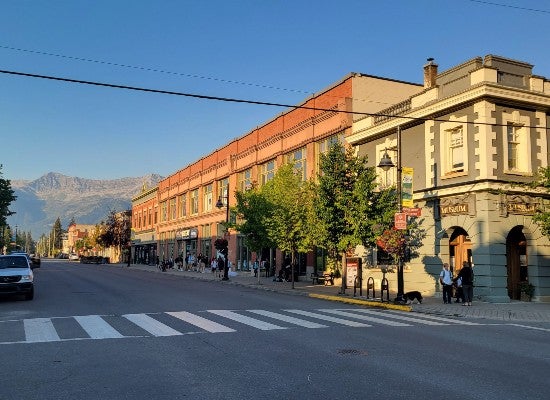 Fernie is a charming town located in the southeastern region of British Columbia, Canada, known for its rich history, stunning natural surroundings, and vibrant community. Its history is deeply intertwined with the development of the Canadian West, and it has evolved from a humble mining town to a popular destination for outdoor enthusiasts and tourists. Here are eight paragraphs that delve into the history of Fernie:
Fernie is a charming town located in the southeastern region of British Columbia, Canada, known for its rich history, stunning natural surroundings, and vibrant community. Its history is deeply intertwined with the development of the Canadian West, and it has evolved from a humble mining town to a popular destination for outdoor enthusiasts and tourists. Here are eight paragraphs that delve into the history of Fernie:Indigenous Presence: Before European settlers arrived, the area now known as Fernie was inhabited by the Ktunaxa (Kootenai) First Nations for thousands of years. They relied on the abundant natural resources of the region, particularly the Elk River, for sustenance and trade.
European Settlement: The arrival of European settlers in the late 19th century marked the beginning of Fernie's transformation. Named after William Fernie, a prospector who played a key role in discovering coal in the area, the town grew rapidly as mining operations took hold.
Coal Mining Boom: The establishment of coal mines in the late 1800s was pivotal to Fernie's growth. The presence of rich coal seams attracted numerous immigrants, primarily from Europe and Asia, who came to work in the mines. Coal mining became the backbone of the local economy.
Economic Prosperity: Fernie thrived economically during the early 20th century, with multiple coal mines operating in the area. The town expanded with the construction of schools, businesses, and homes, reflecting its newfound prosperity.
Labor Struggles: The mining industry was marked by labor disputes and strikes during this period, as workers fought for better conditions and wages. One of the most notable events was the Coal Miners' Strike of 1902, which led to significant changes in labor laws in the region.
Natural Disasters: Fernie faced its share of natural disasters, including devastating fires in 1904 and 1908 that destroyed much of the town. However, resilient residents rebuilt, and the town's architecture from this era still stands as a testament to their determination.
Modern Transition: As the demand for coal waned in the mid-20th century, Fernie faced economic challenges. However, it reinvented itself as a recreational hub, capitalizing on its proximity to the Canadian Rockies. Skiing, hiking, and other outdoor activities drew tourists and new residents alike.
Contemporary Fernie: Today, Fernie continues to be a thriving community known for its stunning natural beauty and outdoor recreation opportunities. The Fernie Alpine Resort is a popular destination for winter sports enthusiasts, while the town's historic downtown area retains its charming character. Fernie's history is celebrated through local museums and festivals, ensuring that its past is not forgotten as it embraces a dynamic future.
Fernie's history reflects the resilience and adaptability of its people, who transformed a mining town into a diverse and vibrant community nestled in the heart of the Canadian Rockies.

 With 15 years of real estate experience, Chris Crump, PREC, is a consistent high performer known for unwavering ethics and exceeding expectations. As a trusted advisor, Chris delivers unparalleled customer service. Chris enjoys skiing, biking, and fishing, reflecting a well-rounded lifestyle resonating with clients. With a commitment to guiding clients toward their real estate goals, Chris stands as a beacon of reliability, setting the standard for exceptional service.
With 15 years of real estate experience, Chris Crump, PREC, is a consistent high performer known for unwavering ethics and exceeding expectations. As a trusted advisor, Chris delivers unparalleled customer service. Chris enjoys skiing, biking, and fishing, reflecting a well-rounded lifestyle resonating with clients. With a commitment to guiding clients toward their real estate goals, Chris stands as a beacon of reliability, setting the standard for exceptional service.